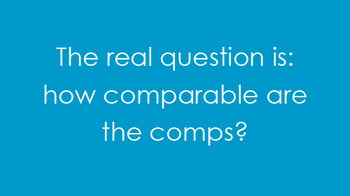
By Mike Ryan, BPN Co-Founder and CEO
Only a few things matter as much as your entry price on an investment, and one of them may be your exit multiple. As a fundamental investor, cash flows are always top of mind, and the strength of the team, market opportunity, product differentiation, and execution results will eventually determine cash flows. That said, multiples paid and received matter an awful lot to your returns.
Why does everyone use multiples? What do they really capture? It’s because each has a different outlook.
The price paid to buy a business is driven by expectations for its long-term outlook. Investors use multiples as a shorthand way of capturing decades of future activity into the price paid for a company. Confident investors can estimate a fundamental financial measure (like Revenue, Gross Profit, EBITDA or EPS) for a given year, choose the “right” multiple to apply based on comparable companies (“comps”), and then solve the complicated valuation puzzle with simple multiplication:
Fundamental Measure x Multiple from Comps = Valuation
The other big reason most investors use multiples is that everyone else uses multiples. You are generally buying from one who uses multiples and later selling to another who also uses multiples. Communication with your boss, LPs, banks, and co-investors is easier with multiples, and you can easily track them over time.
Aside from the fact that the seller wants a higher multiple and the buyer a lower one, what makes a company a “good comparable” to include in a valuation framework? Is it similarity in industry? Business model? Region? Product mix? Company stage? Competitive position? Product features? Long-term contracts? Churn rate? Patent protection? Management ability to execute? Access to capital? Scale? Diversified customer base? The number of competitors? The number of failed competitors? Strategic partners? Regulatory landscape? These elements all boil down to growth rate, eventual profitability, and stability at scale. The comps are the “right” ones only if the characteristics of their outlook are similar to the outlook for the company that we are valuing. What adjustments should we make to arrive at the multiple for our company based on its outlook?
What adjustments should we make to arrive at the multiple for our company based on its outlook?
If they are so important, vary so widely between comparable companies, and change so much over time, wouldn’t it be powerful to have a better method to predict exit multiples?
We can do a better job today of predicting the future multiples by modeling not only scenarios for the actual future cash flows but also scenarios for how investors’ expectations for those cash flows may change as milestones are reached or market conditions change:
Valuation = Fundamental Measure x Multiple from Outlook
Serious investors attempt to do this already. Their spreadsheets may have tabs for upside and downside cases or may include a sensitivity table of various multiples and various fundamental financial measures. Their memos may include quantitative details about how the company will execute its strategy or how it compares to others in its space. In their meetings, they discuss various stories that could lead to great, good, or poor outcomes.
Because the spreadsheet and the memo are disconnected, even these serious investors cannot rigorously quantify scenarios for changes in future cash flows, or produce odds of various cases. Despite recognizing that changes in the long term outlook will be the dominant driver of their ultimate returns, they are left without a quantified grasp of upside and downside based on their own insight.
Now, however, it is practical to do exactly that with the Bullet Point Network Platform. We believe that by Quantifying Stories in Scenarios, investors can have more conviction in their entry price and better predict the exit multiple they will receive.
